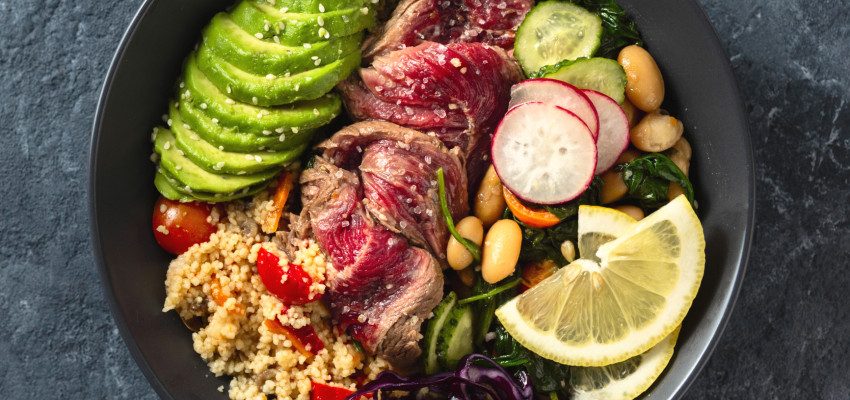By Eryn Carter on January 15, 2020
Macronutrients and Micronutrients
What are they and how do they impact my health?

There are many buzzwords these days about healthy eating--macronutrients and micronutrients being just a few. All foods we eat are comprised of these two nutrient categories: micronutrients and macronutrients.
The two are differentiated by the quantity our bodies need. Micronutrients are vitamins and minerals we need small volumes of (think iron, vitamin E, sodium, calcium, vitamin D and so on). Each micronutrient has a different amount needed to keep our bodies functioning. Consuming a wide variety of foods is a good way to ensure we are meeting the necessary quantity. Macronutrients, on the other hand, are elements the body needs in larger amounts. Every food consumed is a carbohydrate, protein or fat, or a combination of the three.
Carbs
Carbohydrates are primarily used to give the body energy. When broken down during digestion, carbohydrates are in the ready-to-use form the body needs to create energy. This energy fuels cells in every aspect, such as breathing, thinking, moving, talking, blood flow and your heartbeat. While pasta and bread may be the most widely recognized form of carbohydrates, this powerful nutrient goes beyond grains. Fruit, milk and starchy vegetables (corn, peas and potatoes) are also food products that produce energy.
Fats
Fats are utilized in the outer layer of cells and assist in some vitamin absorption and serve as a back-up source of energy. Olive oil, walnuts, avocados and fat from fish each have fat we must consume in order for our bodies to function. Fat is also found in animal products such as meats, eggs, butter and cheese. Fats digest slower than carbohydrates and protein, so they keep us fuller longer.
Proteins
Sources of protein include animal products such as meat, eggs and dairy, as well as a variety of plant sources like quinoa, soy, beans, lentils, nuts and seeds. Each protein food is comprised of a combination of amino acids that allows the body to complete necessary processes such as supporting hormone function, transporting other nutrients and building tissues like muscle, skin and nails.
So, what’s the best way to ensure you are getting each of these key players in your diet? Try to incorporate each macronutrient with every meal. Here is a sample menu packed with nutrients to get you started:
Quick breakfast
- Two eggs cooked to your preference
- ½ cup of fruit
- one slice whole wheat toast with 1-2 tablespoons of almond butter
Warm lunch bowl
- A handful of mixed greens
- ½ cup of cooked quinoa
- ½ cup of sautéed red bell pepper, mushrooms and Brussels sprouts
- sliced avocado
- 4 oz pan-seared sirloin steak cut into strips
Sheet pan dinner
- 4 oz salmon filet lightly coated in avocado oil with salt and pepper
- fresh green beans and potatoes tossed in avocado oil, rosemary, salt and pepper
- Roast in oven at 375 F for 15 minutes, or until fish is cooked to 145 F.
Snacks
- 2 tablespoons hummus with bell pepper strips
- ½ cup of fruit
- ¼ cup of almonds
or
- 3 cups popcorn
- one mozzarella string cheese stick


